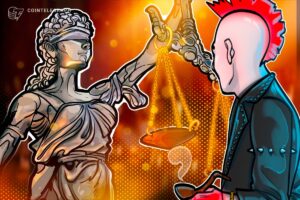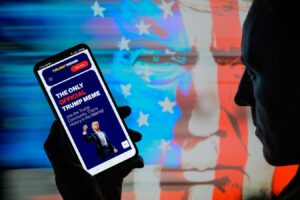NFTs and blockchain, still in the spotlight, Emily Rich

The Culture, Media and Sport Committee has now published its report NFTs and the Blockchain: the risks to sport and culture. The report looks at the complexities and challenges surrounding use of blockchain technology and crypto assets as ways to commercialise the arts and professional sports. It highlights that while NFTs have prompted exciting new digital innovations, this is a complex and volatile area that will continue to attract regulatory interest. In particular, if the Committee’s recommendations are taken up, we may be looking at increased regulation of online NFT marketplaces, limits on the use of fan tokens in football, and additional requirements on advertisers to mitigate the risk of misleading ads for cryptoassets.
The report
The report opens by tracking the roller-coaster ride that digital assets and online NFT marketplaces have been on over the past few years. Interest and investment peaked in mid-2022 (OpenSea, one of the largest NFT marketplaces, achieved a $13.3b valuation in January 2022) but has since waned as investors have pivoted towards other recent developments like generative AI (check out some of our recent thinking on this topic here).
Nevertheless, NFTs continue to appeal, and their use in new and novel ways over the last few years highlights how emerging technologies can present real challenges to traditional regulatory regimes (have a look at some recent examples of how the English courts are grappling with claims concerning digital assets here).
The Committee’s key focus areas and recommendations
In the art world, NFTs have revolutionised how creators like artists, musicians and writers can make and commercialise their work. On one hand, this can encourage artists to develop new digital skills and prompt the creation of new marketplaces for that work.
But at the same time, the nature of NFTs and the way the digital marketplace currently operates (in particular, safe harbour provisions that mean online intermediaries are not liable for unlawful content they host unless notified) means that it can be much easier for a creator’s work to be made available to the public without their permission. It is also difficult and time consuming for creators to have infringing work taken down, particularly compared with the ease of minting an NFT. Together, this creates the conditions for an enhanced risk of IP infringement on a new scale, with limited opportunity for recourse and redress.
The report also mentions smart contracts – self-executing computer programs linked to cryptoassets that automatically execute the terms of an agreement. While this technology could help creators manage rights in their work (and, importantly, secure revenue from sales) the Committee took the view that “smart contracts, as computer programs rather than legal agreements, are not legally enforceable and, in a practical sense, are constrained by the limits of what can be coded into and executed by a machine…”. This is a big topic in its own right, with wide-reaching practical and legal implications – if you’d like to learn more about smart contracts, check out some of our thinking here.
With regards to sports, the report cites examples like the NBA’s Top Shot’s collectible Moments, limited edition NFTs of video clips depicting highlights from the NBA, alongside similar products like utility tokens which give fans access to certain privileges and membership perks beyond ownership of an NFT. The Committee expressed concern that these kinds of digital products are being used to extract additional revenue from fans, and that the speculative nature of cryptoassets could result in a risk of financial harm to fans and reputational damage to clubs. It recommended that the forthcoming regulation of football should explicitly exclude the use of fan tokens.
On advertising of NFTs, the report says that their “technical, volatile and largely unregulated nature” means that advertising them comes with a significant risk of harm to consumers, even for legitimate products.
Where to from here?
The report broadly concludes by recommending greater engagement between regulators and stakeholders to address the risks of IP infringement, and the potential for financial harm to sports fans and misleading and/or fraudulent advertising of digital assets more widely. We’ll be watching to see how policymakers continue to address these challenges and seek to find the right balance between innovation and protecting individual ingenuity going forward. Content creators, advertisers and investors alike will need to keep a close eye on the direction of travel as things can change rapidly in this space, and diverge between jurisdictions. In the meantime, you can have a look and some of other recent thinking on NFTs over here.
Source link
#NFTs #blockchain #spotlight #Emily #Rich





